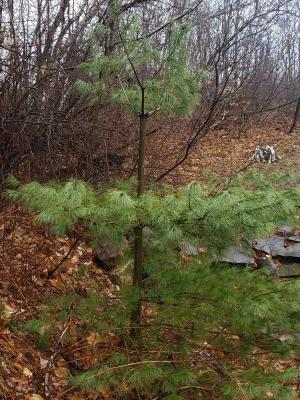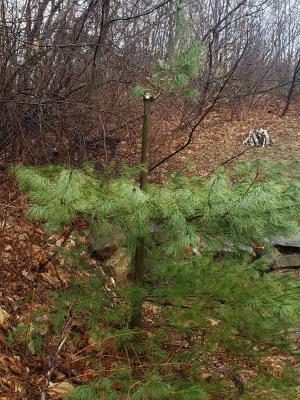- Tags:
- Forestry
An adult white pine weevil.
The latest Forest Health Update has just been released, check it out here.
This reminds me of one particular pest that makes its home in our woods and attacks trees in order to stay alive and complete its life cycle. This pest, which provides visual cues of its impact for decades, is the white pine weevil.
And, as it turns out, this pest is native to NH — however, it's no less destructive to tree health. It doesn’t kill the white pine trees but leaves them severely deformed and vulnerable to breakage.
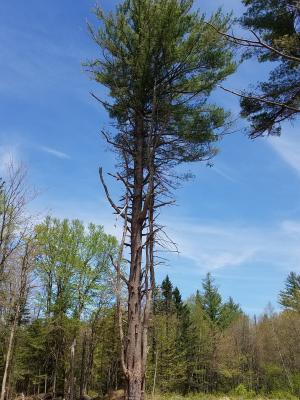
An adult white pine weevil lays its eggs on the terminal branch (the top leader). Then, the larvae hatch and feed their way into this branch, killing it. Side braches or “leaders” attempt to take the lead for that top branch spot.
This reaction is called apical dominance, a growth reaction that white pine trees portray strongly.
Because there can be as many as five leaders all shooting upwards, this causes a tree to form multiple large limbs all at one point on the tree.
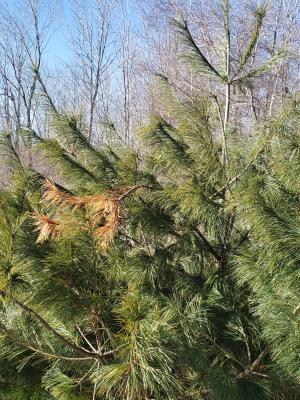
A weevil-free tree will be perfectly straight with its top most branch always forming the top of the tree.
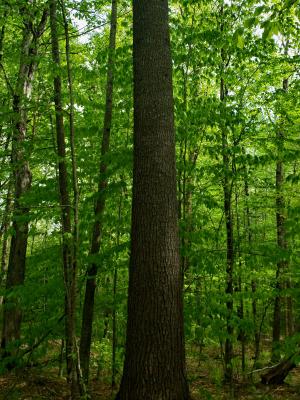
Trees growing in the sun are most susceptible to this pest, whereas trees growing in partial shade tend to be less attractive. Forest managers can take this into account when the goal is to grow pine for optimum health and quality lumber by ensuring there is an appropriate level of shade in the first 10 to 15 years of its life. If a young pine does happen to get attacked, there is a pruning technique that exploits the trees nature of obtaining a dominant leader.
By pruning all but one of the 5 lower leaders, the tree will once again grow a nice, straight stem.
